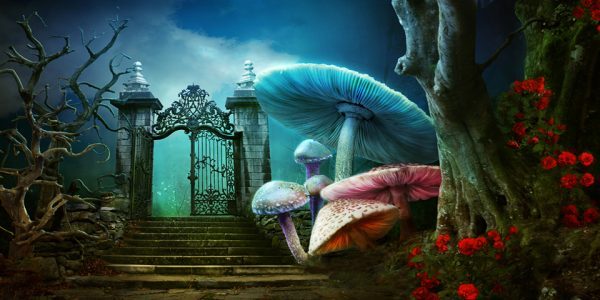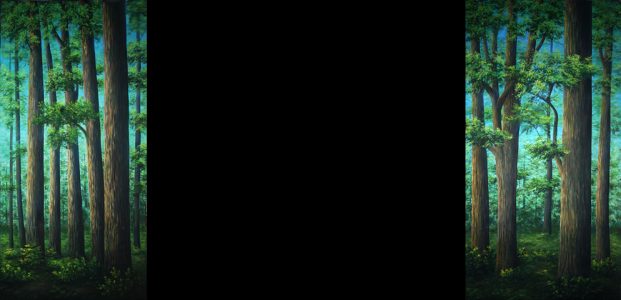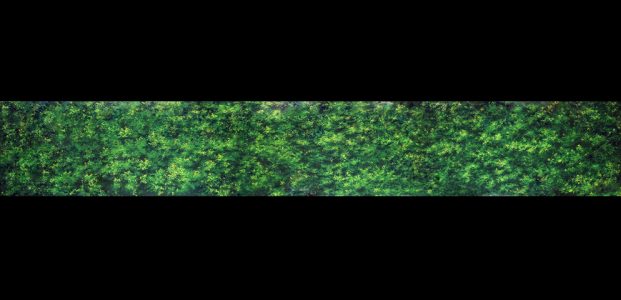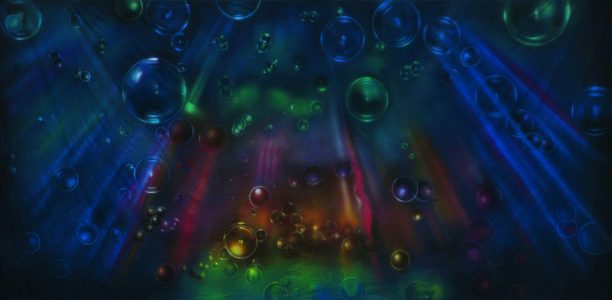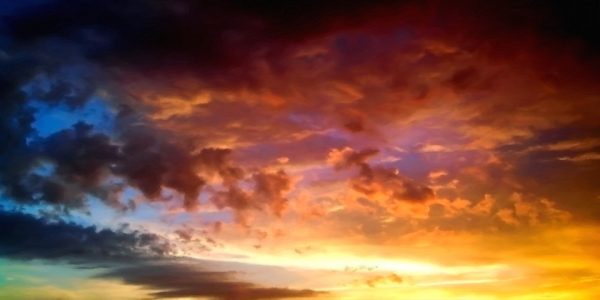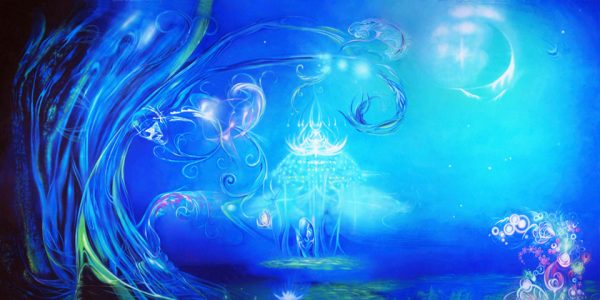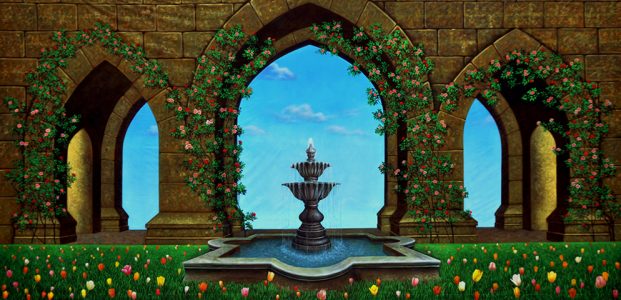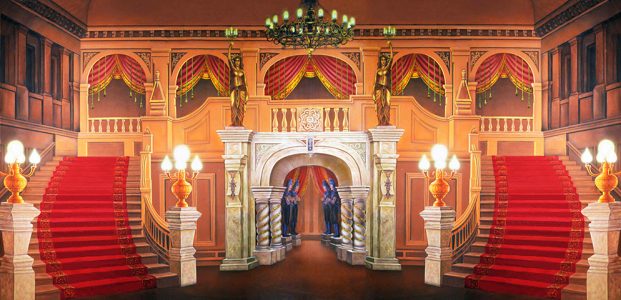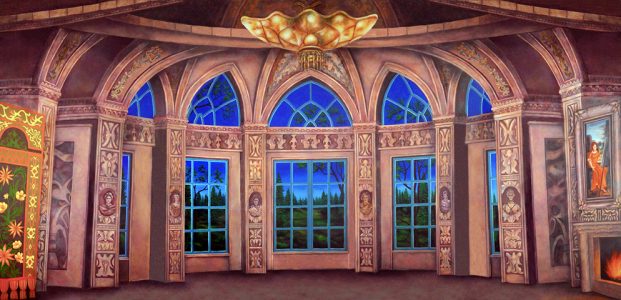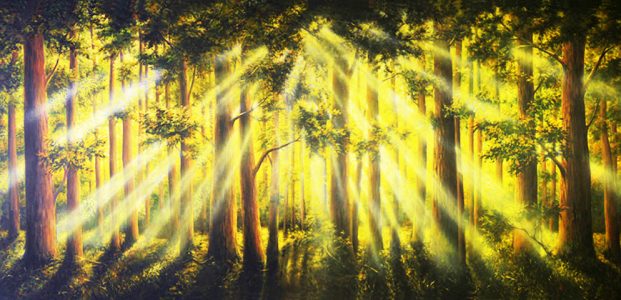Going Beyond the Script
Alice in Wonderland Backdrop and Scenery Perspectives
ALICE IN WONDERLAND is a journey of imagination and nonsense. Written in 1865 by English author Lewis Carroll, the novel tells the story of a young girl named Alice who falls into the fantasy world known as “Wonderland.” Since the early 1900’s, the book has inspired many adaptations from stage to screen to ballet; from free-spirited flights of fancy to downright sinister walks through our darkest dreams.
Traditionally speaking, this story is characterized by elements of silliness and riddles imbued with cautionary tales of mortality and madness. From a theatrical perspective, the Director has many options. Directors can choose to take the audience down a path of light or dark. Utilizing a collection of ALICE IN WONDERLAND backdrops, lighting effects, and perhaps some pyrotechnics, the Director can engage the audiences’ senses as they are led into the magical mad world of Wonderland.
Selecting the Right ALICE IN WONDERLAND Backdrops From the Opening Scene
In the beginning, Alice is a normal girl. The story opens on an average day in a quiet, tranquil woods. Accomplish this by framing the stage with the TRANQUIL WOODS LEGS and TRANQUIL WOODS HEADER, but leaving center stage dark and empty. The ability to present scenery while creating a void on center stage is one of the many benefits of employing theatrical header and leg packages. Seat Alice in front of either leg for the opening scene using only some warm, amber sunlight shining down on her.
If you can avoid using the main curtain in order to close off center stage, do so. It’ll create a greater effect to simply shift the lighting from the legs to the center than to open the curtain as the reveal. (Either way will work, though.)
As Alice sits quietly, the white rabbit races on from behind one of the legs, perhaps crossing from the opposite side of the stage, coming out from the darkness and into Alice’s light. Let Alice chase him behind the next leg. She then falls into the hole. To show this, switch the lights from the bright sunshine on the legs to the center only.
Alice Falls Down the Rabbit Hole
As Alice falls down the rabbit hole, use the BUBBLE LIGHTS scenic backdrop and various lighting effects to show the passage of time. The abstract and slightly psychedelic design make this a perfect backdrop for ALICE IN WONDERLAND, especially when it comes to this particular scene. Gobos, either stationary or rotating, are great for creating a number of mystical effects. Gobos can be added to a number of lighting instruments and can be easily created with kits or stenciled metal plates. (Note: avoid using cheap metal plates such as pie pans, especially if being placed in front of a LEKO – an ellipsoidal light- or other conventional light. They will heat up and can burn the pie pan. Placing pie pan gobos in front of LED lights has less danger, as LED’s maintain a cooler temperature.)
Gobo ideas can be wide and varied: rotating images of clock faces, sweeping light patterns that swirl about the stage, images from your production house or school, and random projections. These images can all be used with various colors and intensities to enhance Alice’s entrance into Wonderland. Have fun with the images you choose. Just avoid using strict rectangular shapes or it’ll feel like a very weird PowerPoint presentation.
Setting the Scene for Wonderland
Once Alice lands, she enters a world of hallways, door knobs, and keyholes. Use stationary gobos and set pieces at various heights. Giant hanging keyholes or door knobs ranging in size from 1’ to 4’ in a multitude of colors and styles would also look great. If you don’t have the ability to hang these objects, build them upwards using a lattice support structure and paint the support beams black to help them disappear.
Incorporate the entire stage area to really make the scene come to life. Aim spotlights at different intensities with various colors to illuminate each piece. This space should be disorientating and dreamlike. The actors should be free to move in and out of the set pieces, so try making a keyhole or two big enough for Alice to walk through.
After Alice finally makes it through the entrance of Wonderland, she is immediately embraced by the larger fantasy. Giant flowers, caterpillars, and a Cheshire cat are among the residents she will encounter.
If you have a good set of colorful electrics or LED’s running above the stage, use this colorful FIRE SKY backdrop as Alice wanders through Wonderland. Allow for movable set pieces to showcase each new location. The set pieces don’t have to be extravagant, but use them as accents. For example, simply surround the caterpillar’s seat with mushrooms, flowers, and giant leaves, instead of filling the entire stage.
Try using various colors to light the FIRE SKY for different locations and characters. Use blues and greens when the caterpillar is present, or reds and purples when the Cheshire Cat makes his appearance. Due to the extremely colorful sky backdrop, you can play with slow color changes throughout the entire scenes for a fun, mystical effect. Adding in some low stage fog will help give a nice, slightly sinister vibe.
Wonderland Gate
If you are limited on lighting or technical effects, or if you want more unit set pieces, the WONDERLAND GATE is a great ALICE IN WONDERLAND backdrop to use. It can be used as a single drop for any of the Caterpillar, Cheshire, and Mad Hatter scenes individually or, it can be in the background with the characters placed at various distances apart on the stage. (For instance, place the Caterpillar down stage right, the Cheshire up center stage, and the Mad Hatter mid-stage left.)
Still try playing with lighting effects to show transitions or add emphasis to various characters or try lighting this backdrop at various angles to splash color across it. Fog would also be an excellent enhancement with this drop, especially if you want to up the “creep” factor.
You can also use both the FIRE SKY and WONDERLAND GATE for Alice’s journey through various levels and scenes that transpire in Wonderland.
Time for Tea
The Tea Party scene, like the Mad Hatter, should be whimsical, but unique from the rest of Wonderland. This MAGICAL ILLUSIONS backdrop has a completely different color scheme than the previous selections and draws the eye up and around in a swirling motion.
Place the Hatter on the stage right side of this drop and allow Alice to enter from stage left. The impression is that the Mad Hatter has a built up amount of insanity (the vertical elements) that boils over and onto his guests and across the scene (the swirling curls that stretch across the top center will represent this caveat visually). Try using vivid blue lights on this scene, as it will give an almost 3-D effect to the backdrop.
The Queen Plays a Game
As Alice continues through Wonderland, she comes across the royal court. The entirety of the Queen of Hearts’ scenes should have a rigidly different feel than the rest of the residents. Give her a more unyielding styling with traditional structural designs; she is the ruling force in Wonderland. For the Queen’s croquet game, use BELLE’S GARDEN – B as it is a castle-like garden with a hint of darkness.
Off With Her Head!
When the Queen calls the court to order, we should absolutely see the grandness of her majesty. In contrast to the free-flowing, stream-of-consciousness nature of Wonderland, the Queen’s domain should have more straight lines and grandiose structure.
The MAJESTIC MANSION FOYER is bright, red, and opulent. Aroyal throne could easily sit at the center of this backdrop. Try elevating the Queen’s throne up a few feet from the rest of the court to make it more imposing. Use lots of bright flood lighting in ambers and roses; there should be no blues or greens in the Queen’s court.
If you want to give Alice a more confined and trapped feeling, use the BAROQUE BALLROOM. Up lighting will give this drop the imperial vibe. If you have enough lights, alternate red and white lights and try using a heart-shaped gobo to illuminate the top center chandelier.
All’s Well That Ends Well
When the madness ends and Alice awakes, we find that all the colors, shapes, and structures of Wonderland have disappeared. The world is reborn and at peace, as represented by the TRANQUIL WOODS SUNRISE backdrop. This drop will nicely compliment the TRANQUIL WOODS LEGS and HEADER that were featured at the beginning of the show. Using all three backdrops together will bookend the show and help to contain the madness of Wonderland behind its seams.
ALICE IN WONDERLAND’S Central Themes
Theories about ALICE IN WONDERLAND abound. However, most agree that ALICE IN WONDERLAND is ultimately about the inevitable loss of childhood innocence. It’s whimsical, mysterious, frightening, silly, and confusing. As Alice herself explains:
“It seems very pretty,” she said when she had finished it, “but it’s rather hard to understand!” (You see she didn’t like to confess, even to herself, that she couldn’t make it out at all.) “Somehow it seems to fill my head with ideas – only I don’t exactly know what they are!”
Carroll, Lewis (2010) Alice’s Adventures in Wonderland and Through the Looking-Glass
pp 64–65 Createspace ltd ISBN 1-4505-7761-X
When performing this show, utilize those awkward, disorienting, uncomfortable ideas and feelings. Be creative; be silly; use your imagination and above all – don’t limit yourself. Take a moment to consider a variety of ALICE IN WONDERLAND backdrops. With so much room for interpretation, you can truly enact your vision of Alice’s journey and Wonderland itself.

